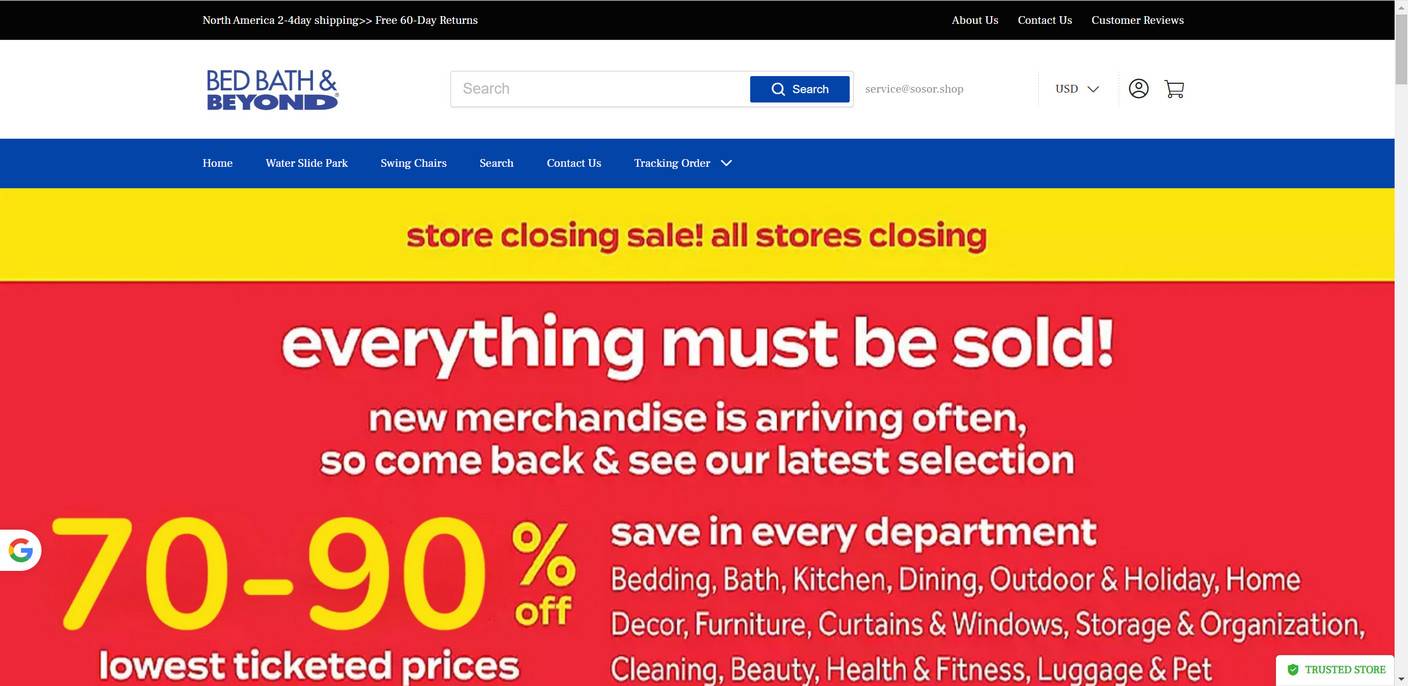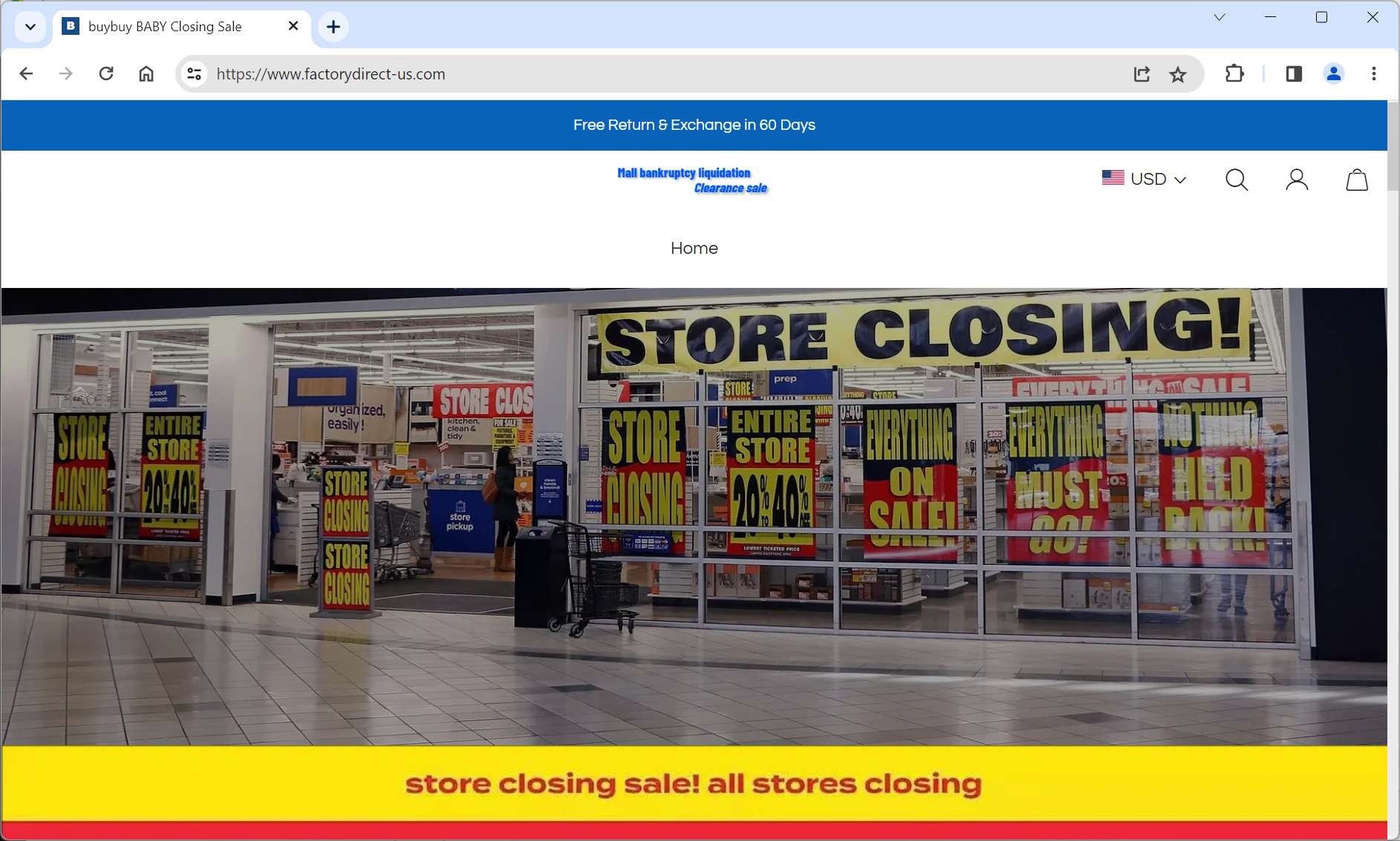Recently, a series of fraudulent “Bed Bath & Beyond Warehouse Sale” websites have emerged that falsely claim the home goods retailer is having huge clearance sales. These elaborate fake sites mimic the real Bed Bath & Beyond website to trick customers. This article will reveal what these scam sites are, how they operate, and tips for spotting and avoiding the fake Bed Bath & Beyond Warehouse Sale domains.
What are the Fake Bed Bath & Beyond Warehouse Sale Sites?
The Bed Bath & Beyond Warehouse Sale scam websites refer to a network of fraudulent sites that use the Bed Bath & Beyond name, logo, images, and overall website design to mislead people into thinking they are authorized warehouse sales.
They create lookalike domains like “bbwclearancewarehouse.com” intending to deceive customers. However, Bed Bath & Beyond has not authorized any warehouse liquidation sales. The scam sites have no actual relationship with the genuine company.
Some common signs that a Bed Bath & Beyond Warehouse Sale site is fake:
- Website URL contains the words “warehouse” or “clearance”
- Prices on items are unusually low or discounted
- Domain name is slightly different than the real site
- Credit card logos appear distorted or hyperlinked
- Misspellings, grammar errors, and typos throughout the site
- No physical address or contact details provided
How the Fake Bed Bath & Beyond Warehouse Sale Sites Operate
The criminals behind these fake warehouse sales sites use various deceitful techniques such as:
- Buying online ads promoting their site as an authorized Bed Bath & Beyond clearance sale
- Making up elaborate stories about excess warehouse inventory being liquidated
- Displaying unrealistic 70-90% off discounts on expensive merchandise
- Providing fake 1-800 numbers and chatbots that lead nowhere
- Charging victims’ credit cards fraudulent fees exceeding advertised prices
- Burying terms and conditions with hidden membership fees
- Never shipping any orders, just stealing customers’ payment information
- Using stolen credit card numbers for additional fraudulent charges
- Refusing refund requests and making it impossible to cancel recurring charges
The scam websites are designed to look convincingly like a real authorized Bed Bath & Beyond sale at first glance. However, the exaggerated pricing, lack of customer service, and inability to fulfill orders reveals their true intentions – to scam consumers.
What to Do If You Encountered a Fake Site
If you suspect you may have placed an order or provided information to a fraudulent Bed Bath & Beyond Warehouse Sale site, immediately take these steps:
- Contact the real Bed Bath & Beyond to notify them of the website misusing their brand.
- Monitor your credit card statements closely for any unauthorized charges. Dispute any suspicious transactions.
- Check your credit reports for signs of potential identity theft. Consider placing a fraud alert.
- Change account passwords, especially if they match any passwords used on the fake website.
- File claims with your bank and credit card company to attempt to recover lost money paid to the scam.
- Report the fake website to the FTC, IC3, BBB, and other agencies dedicated to combatting online retail scams.
- Leave reviews about your experience to warn others not to trust the fraudulent sales websites.
How to Identify the Real Bed Bath & Beyond Website
When shopping online, take the following steps to verify a website is the genuine Bed Bath & Beyond site:
- Double check the domain name ends in bedbathandbeyond.com specifically.
- Look for the correct contact information like a working customer service number.
- Verify the site has the padlock security icon and https protocol enabled.
- Compare prices against the real site to identify inflated scam discounts.
- Watch for typos, grammar issues, and other signs of an unprofessional scam operation.
- Confirm any advertised clearance sales by calling Bed Bath & Beyond customer service before providing payment information.
Conclusion
In summary, consumers should watch out for the network of deceitful websites impersonating Bed Bath & Beyond and promoting fake warehouse sales. Take time to scrutinize site details carefully before entering personal or payment information. Report any scams you come across so legal action can be taken. With awareness and caution, shoppers can avoid the fake Bed Bath & Beyond Warehouse Sale websites and safely shop the real retailer’s legitimate site.












